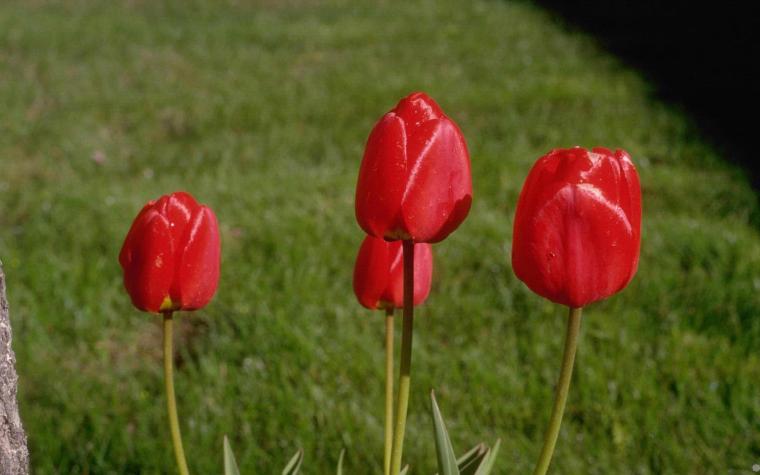COLUMBIA, Mo. – Fall is the perfect time to share the love of flower power with neighbors, friends and family, says David Trinklein, University of Missouri Extension horticulturist.
As spring-flowering bulbs such as tulip and narcissus grow, they produce offshoots adjacent to the original bulb. When these bulb clusters become overgrown, flower numbers usually decline. This is a good indication it is time to rejuvenate the bulb cluster by dividing it, Trinklein said.
After lifting the bulb cluster carefully and dividing it, you can move extra bulbs to new locations or share with others. It is a great way to improve the neighborhood, make new friends and reduce the cost of having a beautiful yard, he said.
Plant spring-flowering bulbs by the end of October. Soil is still warm enough for bulbs to establish good root systems before winter.
Plant in well-drained soils. Most bulbs benefit from a fertilizer with a nitrogen-phosphorus-potassium ratio of 1:2:2 (such as 5-10-10) or 1:3:3. Avoid fertilizers that are high in nitrogen, which can lead to bulb rot. Some gardeners prefer bone meal, but it can attract digging animals. Manure is not a good choice unless it is well aged.
Narcissus (daffodil)
Nothing says spring like the sunny-faced daffodil. With adequate drainage, daffodils thrive for years in most Missouri soils.
Known for their vigor, daffodils need at least five hours of sunlight daily.
Space 6-12 inches apart, depending upon the cultivar and desired effect. Plant so the base of the bulb is about 6 inches below the soil surface. In lighter soils, this can be 8 inches. If dry, water the bulbs after planting and throughout the fall. Apply a mulch.
Properly spaced bulbs need to be divided every five to 10 years or when flowers become smaller. Dig a clump of bulbs when foliage dies back but is still visible. After bulbs are dry, remove offsets from the parent bulb and store in a dry, cool location with good air movement. Replant in October.
For more information, see the MU Extension guide “Spring Flowering Bulbs: Daffodils” (G6610) at extension.missouri.edu/publications/g6610.
Tulip
Many Missouri gardeners treat tulips as annuals, Trinklein said. Missouri warms too early in the growing season for tulips to make enough food to naturalize well. They usually decline in vigor and bloom quality when bulbs stay in the ground or when dug in the spring after flowering for fall replanting.
Plant tulips about 2 ½ times as deep as the bulbs are wide and space them 4-8 inches apart, depending on the cultivar. Bulbs need water in dry autumns, but too much water causes bulb rot.
For more information, see Trinklein’s article “Tulip: A Brief History” from the Missouri Environment & Garden newsletter at ipm.missouri.edu/MEG/archive/2016/v22n10.pdf.
Minor bulbs
“The tendency of these plants to flower very early makes them welcome harbingers of spring,” Trinklein said.
Popular minor bulbs include crocus, Dutch iris, Glory-of-the-snow, grape hyacinth, Siberian squill, snowdrop and winter aconite.
These small bulbs bring big pops of color when planted en masse. Plant in groups of 50 bulbs or more. Space 3-4 inches apart to a depth equal to about three times their height.
They need loose, well-drained soil. Add organic matter to improve poorly drained soils. If soil is heavy, plant bulbs in a rock garden or on raised mounds for better drainage.
Photo available for this release:
Tulips
Tulips. Howard F. Schwartz, Colorado State University, Bugwood.org.
